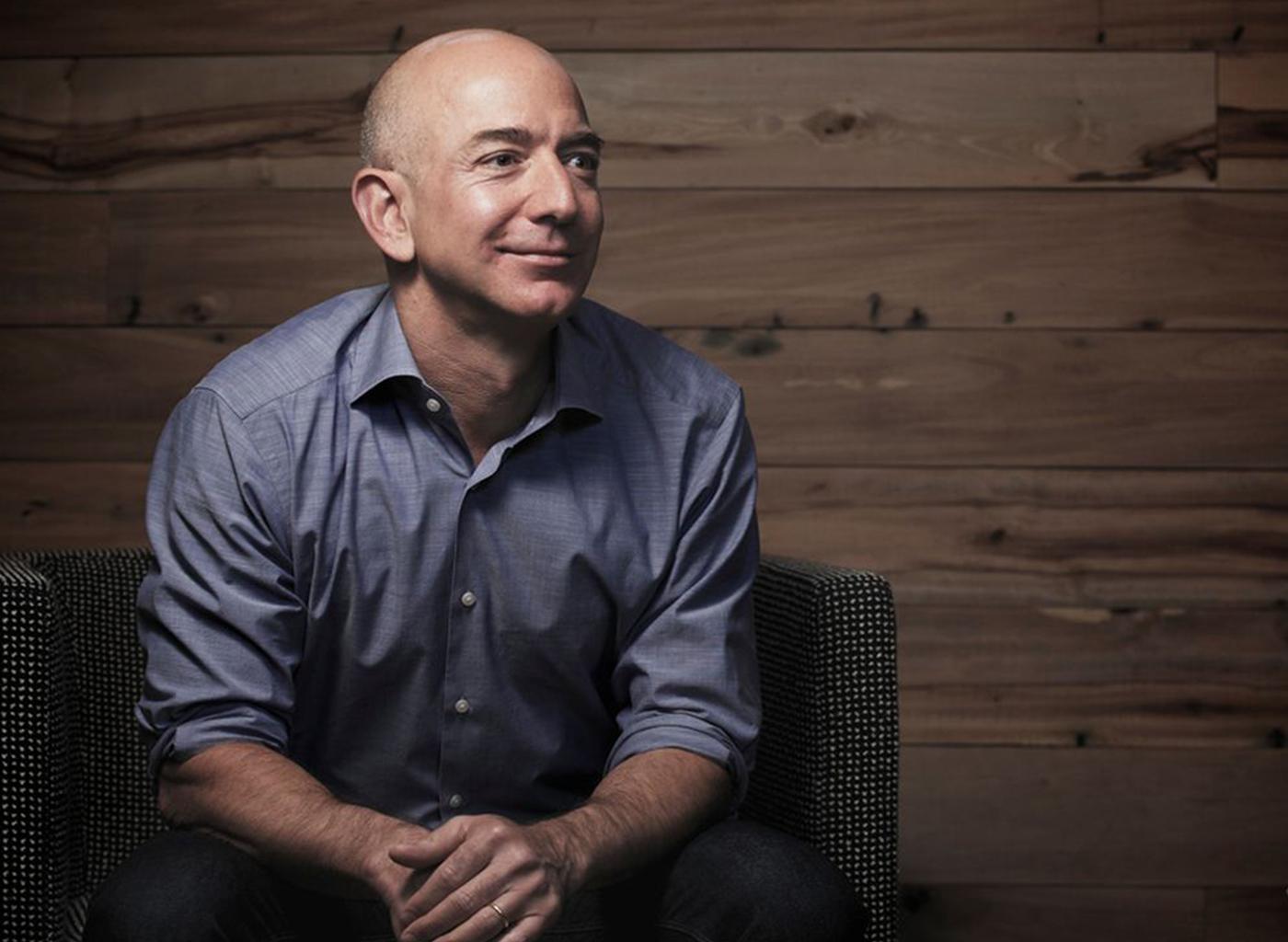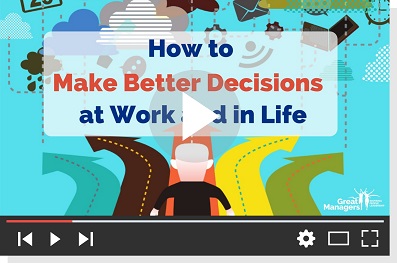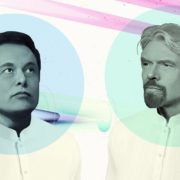5 Important Lessons from Jeff Bezos’ Letter to Amazon Shareholders
Amazon’s Jeff Bezos is the richest man in the world right now. But he is also known for his distinct strategic leadership style. In his most recent letter to shareholders, he outlined the key rules of building a positive workplace culture.
 In 1994, Jeff Bezos founded Amazon.com, a pioneering e-commerce company. He drafted the original business plan and ran the entire operation from his garage at first.
In 1994, Jeff Bezos founded Amazon.com, a pioneering e-commerce company. He drafted the original business plan and ran the entire operation from his garage at first.
More than two decades later, Amazon is the world’s leading online retailer. With its foray into streaming video, the company is now also a major player in the entertainment industry. Moreover, Amazon is also the world’s largest provider of cloud storage space.
For the past 23 years, Jeff Bezos has served as the CEO of Amazon. In November 2017, Forbes named him the richest man in the world. They estimated his net worth at more than US$100 billion. That was enough to put him above Bill Gates, the previous holder of the top spot.
Annual Letters to Shareholders
In the business world, people see Bezos as one of the great modern thinkers. He earned this reputation in large part due to his annual letters to Amazon shareholders. The first of them dates back to 1997. Since then, he has used them to track the process of building the culture in the workplace at Amazon.
Bezos released his 21st annual letter to his company’s shareholders in April 2017. In it, he highlighted the main aspects of the great company culture he helped establish at Amazon. Reflecting on his 1997 letter, he also shared some important lessons in building a positive workplace culture.
Day 1 vs. Day 2 Companies
In the opening of his 2017 letter, Bezos makes a distinction between Day 1 and Day 2 companies. He first referred to Amazon as a Day 1 company way back in 1997. According to him, Day 1 applies to companies that are on their way up.
Unlike them, Day 2 companies are on their way down. He sees Amazon as a permanent Day 1 company. “Day 2 is stasis. Followed by irrelevance. Followed by excruciating, painful decline. Followed by death.”
In his words, this decline doesn’t have to happen fast. As a matter of fact, it can play out over several decades. Most businesses won’t even notice it happening. But the inevitable final result is always the same.
2017 Letter to Shareholders: Key Lessons
When building culture in the workplace, it’s important to ensure that the company remains in Day 1. In the most recent letter, he shares some pointers on how to achieve this. These reflect his unique strategic leadership style.
It is interesting to know that there’s no mention of money or profit anywhere in the letter. This strategy has helped Amazon grow its gross profit to US $47.72 billion in 2016. Instead of sitting on the money the business generates, he focuses on long-term goals. As such, he directs the money towards securing further investments in the company.
In one of the best examples of company culture statements, Bezos shares five important business lessons. All managers can take a page out of his book when building a positive workplace culture.
Lesson #1 – Focus on Your Customer

According to Jeff Bezos, customer obsession is one of the keys to staying in Day 1. Of course, companies can choose what they want to focus on. They can focus on their products, technology, or their business model. They might also direct their attention towards beating the competition.
But Amazon’s decision to focus on its customers has proved crucial to its lasting success. Bezos says that even when customers claim they are happy with the service, they are always dissatisfied. As such, it’s up to businesses to come up with new ways to engage them and keep them on board.
He cites the example of Amazon’s Prime programme. With it, users get access to thousands of movies and books, as well as millions of songs. Moreover, they also get free shipping on physical products. Bezos says no one ever asked Amazon to offer such service. Yet it’s helped them maintain high levels of customer satisfaction.
This has been the company policy from the get-go. They always aim to create a better service and a more easy-to-use interface. After a while, they were also able to offer much lower prices than their competition.
This obsession over customers has helped turn Amazon into one of the most positive corporate culture examples. In practical terms, it has helped grow their revenue and generate positive word of mouth. “Word of mouth remains the most powerful customer acquisition tool we have, and we are grateful for the trust our customers have placed in us.”
Lesson #2 – Make Decisions Fast
To remain a Day 1 company, it’s not enough to make high-quality decisions. You need to make high-quality decisions fast. This is the go-to approach of Amazon’s senior management.
According to Bezos, this can be tricky, as there’s more room for error. But another hallmark of a great company culture is the ability to solve those issues early on. If you can do it, it may cost you much less than being slow at making a decision.
Sometimes, you also have to trust your team to do something you may not agree with. Bezos calls this approach “disagree and commit.” He cites a recent example where he green-lit a series for his streaming service even though he didn’t have much faith in.
 But he did have faith in his team, which made his decision easier. He wrote them a message saying “I disagree and commit and hope it becomes the most watched thing we’ve ever made.”
But he did have faith in his team, which made his decision easier. He wrote them a message saying “I disagree and commit and hope it becomes the most watched thing we’ve ever made.”
It’s all rather simple: he believes that his team know what they’re doing. What’s more, had he declined their proposal, they would have wasted a lot of time trying to persuade him. In building a positive workplace culture, you sometimes have to take risks. If experience has taught us anything, it’s that, in the end, some of them might pay off big time.
Want to learn practical steps to make better decisions as a leader? For a limited time, you can subscribe to the Great Managers MasterClass for free and view our training on How to Make Better Decisions. Click here for more info.
Lesson #3 – Escalate Misalignment Issues Straight Away
Conflicting views within teams are common in any workplace. Bezos makes it clear that Amazon is no exception to the rule. He dubs these “misalignment issues.” If they go on for too long, they could create a toxic culture in the workplace.
The end result of this process is always the same – exhaustion. According to Jeff Bezos, this is never the smart way to go. “‘You’ve worn me down’ is an awful decision-making process. It’s slow and de-energising. Go for quick escalation instead – it’s better.”
He cited an example from his own experience. This happened when Amazon first toyed with the idea of allowing third-party sellers to feature on their pages. Many found it outrageous to welcome competitors on the site. But instead of delaying it, Bezos decided to act fast.
By doing that, he took an already great company culture to a whole new level. This also ties in with his earlier point. It takes a lot of time to sort out these misalignment issues. Thus, it prevents the senior team from making rapid decisions.
What’s more, these internal conflicts of sorts often don’t take care of themselves. As a result, the company would miss out on great opportunities. This way, they implemented the change and resolved all the issues that arose on the go. This is very important to building a positive workplace culture.
Lesson #4 – Embrace Innovation
Staying on top of current trends is essential to any company’s longevity. Yet according to Bezos, resisting the changes can lead a business into Day 2.
It is much easier for small businesses to do this. At the same time, it could be somewhat problematic for large companies like Amazon. For one, they have many managerial levels that need to approve the change. Then there’s also the scope of their operations and the effect sudden changes would have on them.
Right now, Amazon is focusing on implementing one such change. Bezos says they are exploring artificial intelligence and the power of machine learning.
Some of these changes are rather visible. For example, Amazon has recently started testing air delivery drones. They also have their own AI assistant, Alexa. Alexa is an integral part of their Echo line of smart speakers.
Machine learning is also doing a lot of work behind the scenes. It helps them develop strong algorithms to improve their services. Furthermore, app developers can access the API and develop their own software using Amazon’s technology. According to Bezos, this will remain their strategy going forward.

Lesson #5 – Find Employees Who Think Like Owners
Like he always does, Bezos attached the original 1997 letter to his most recent one. In it, we can find one great example of employee development methods. Back then, he claimed that his goal was to find employees who think like owners.
In the year prior, Amazon hired 450 new full-time employees. Twenty years later, the number has risen to 230,000. There are plans to grow the staff by 100,000 across the world by mid-2018.
Bezos points out that talented and versatile employees are vital to his company’s success. They also have to think of the company instead of themselves. To motivate them, Amazon compensates them in stock options. They are thus not only employees but also owners.
The team at Amazon is very result-oriented. On top of that, they also focus on the long-term stability of the company. As such, it’s important to find employees who will contribute to their goal. That’s what sets them apart from other large companies with bad corporate culture.
What to do Next
In the last 23 years, Jeff Bezos has led his company to incredible success. His effective leadership skills have helped him in building a positive workplace culture.
Following his expert advice will enable you to do the following:
- Make smart business decisions with long-term positive effects.
- Create high-performing teams of employees who think like owners.
- Remain the leader in the market by adopting innovations.
Remember that a great manager can DOUBLE the capacity of their people.
For a limited time, you can subscribe to the Great Managers MasterClass for free and learn practical skills that will help you become a great manager. Click here for more info.








